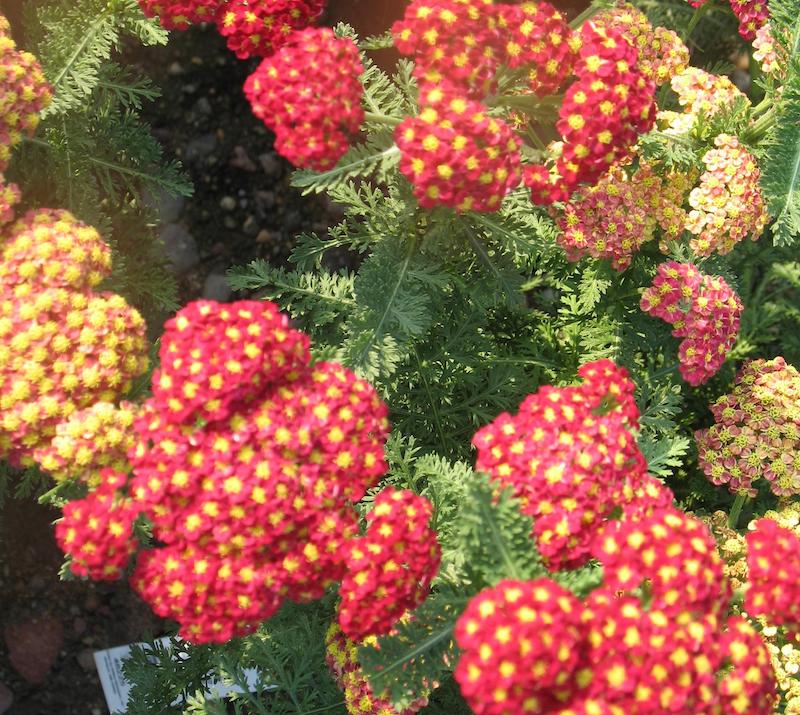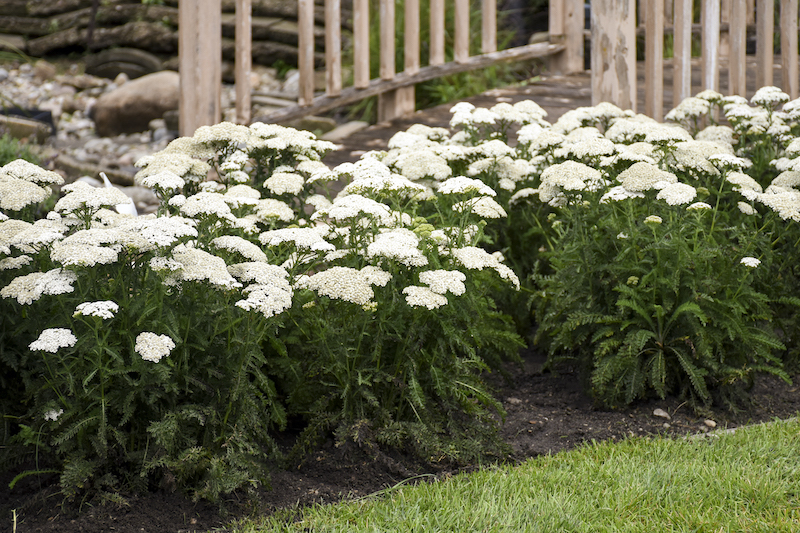Fertilizing native plants like Yarrow is rarely needed. They have adapted to certain soil and moisture conditions to get all of the nutrients needed from the native soil. Yarrow in its native form is very tough and needs little if any additional maintenance. There are developed cultivars of Yarrow available in just about every color. These are the Yarrows that can benefit from a well timed extra feeding to prolong the blooming season.

How to Fertilize Yarrow
Yarrow grows best in soil that has a pH of 6.0 and above. Slightly acidic soil to slightly alkaline is the perfect range. A quick pH test will let you know how acidic or alkaline your soil is. These tests are very simple for home gardeners and are widely available. Soil tests that determine the level of nitrogen, phosphorus, potassium (designated as NPK on fertilizer labels), and other micronutrients are much more involved and generally better to have a testing lab perform. The contact info for your local testing lab can be obtained from a County Extension office or Master Gardener program.
Over-fertilizing is as bad for plants as not feeding enough. Often the symptoms of overwatering, underwatering and fertilizer burn are the same: brown, desiccated leaves. When using a granular fertilizer, make sure not to spill any on the foliage or to apply during very hot weather. Always water the top dressing in well afterward. Use a liquid fertilizer diluted to the exact manufacturer's recommendation. Using more than recommended will at best get washed out of the soil into waterways or storm sewers and at worst will burn plants.
Best Time to Fertilize Yarrow
Yarrows that need fertilizer only need feeding once a year. Early spring as the foliage emerges is the time to apply a granular, slow-release fertilizer at recommended amounts. This one feeding will support continuous blooming and vigorous growth through the summer. Fertilizing later in the summer will not help the plants bloom more and will only encourage excess foliage growth that is weak and susceptible to disease and pests. The best fertilizer for natives such as yarrow is a layer of organic compost, applied in the fall.

Best Fertilizer for Yarrow
Yarrow is generally grown for its long flowering period that attracts a host of beneficial insects and pollinators. Often, deadheading on a regular basis will keep Yarrow blooming until fall. When Yarrow begins to slow its blooming, a fertilizer may be needed to give it a jump start. Dividing the plants may also help to reinvigorate the plant.
A slow-release fertilizer will be the most effective form of fertilizer and only needs to be applied once a year. Look for a formulation that has higher phosphorus (P) which will support bloom formation. Brands such as Dr Earth, Espoma and Down to Earth are recognized by OMRI as being approved for organic growing and have formulations that release slowly to replenish nutrients over a long period of time.
Yarrow Fertilizing Tips
- Yarrow generally needs very little fertilizing. It prefers soil that is lean and close to neutral on the pH scale.
- Apply a slow-release fertilizer once a year in the early spring when the new growth emerges.
- Organic compost used as a mulch also adds nutrients to the soil.
Warnings
-Always wear protective gloves and a face mask when handling chemical fertilizers
-Closely follow all directions and storage guidelines that are on the fertilizer label.
 |
Author Robbin Small - Published 7-7-2022 |
